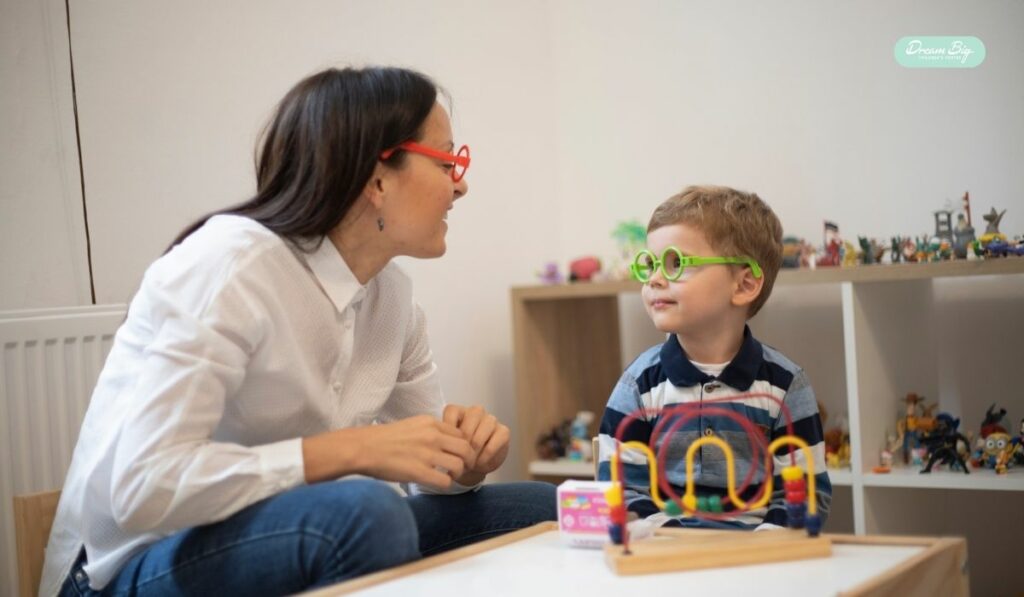Navigating Insurance for Autism Services
Learn how to effectively navigate insurance for autism-related services.
Traveling with a child with Autism Spectrum Disorder (ASD), especially for families in Monrovia, CA, seeking ABA (Applied Behavior Analysis) autism therapy, can present unique challenges, particularly when it comes to air travel. The unfamiliar environment, perceptible stimuli, and routine disruptions can be overwhelming for children with ASD. However, with careful planning and consideration, parents can make the journey smoother for both their children and themselves.
Here are 15 valuable tips to help navigate ASD air travel and ensure a positive and comfortable experience for everyone involved in ABA autism therapy in Monrovia, CA.
Begin your travel preparations well in advance. Familiarize your child with the idea of flying by discussing the journey, showing pictures of the airport and airplane, and explaining the security procedures. Create a visual schedule to help your child understand the sequence of events, reducing anxiety about the unknown.
Opt for flights during times when your child is typically more relaxed and calm. Consider booking flights during off-peak hours to avoid crowded airports and long lines. This strategic planning can minimize perceptible overload and create a more comfortable environment for your child.
Reach out to the airline well in advance to inform them about your child’s unique needs. Airlines are often willing to accommodate families with special requirements, such as early boarding or assistance navigating the airport. Communicate any dietary restrictions or preferences your child may have, ensuring that the airline is prepared to meet their needs.

Prepare a comfort kit containing familiar items that bring your child a sense of security. This may include favorite snacks, toys, or perceptible tools that can provide comfort during the flight. Having familiar items on hand can help ease anxiety and create a more relaxed atmosphere.
The security checkpoint can be a source of stress for children with ASD due to the unfamiliar procedures and perceptible stimuli. Practice the security process at home, using role-playing scenarios to help your child become familiar with the routine. Explain the need for security checks and assure them that it’s a necessary part of the journey.
Airports and airplanes can be noisy environments, which may be overwhelming for a child with ASD. Invest in noise-canceling headphones to help minimize auditory stimuli. These headphones can create a quieter, more controlled space, allowing your child to regulate their perceptible experiences during the journey better.
Choose your seats on the plane strategically. Opt for seats that best suit your child’s needs, considering factors such as proximity to the restroom, ease of movement, and access to natural light. Some airlines may allow you to pre-select seats or provide assistance in finding the most suitable options for your family.
Bring entertainment options that cater to your child’s interests. Whether it’s a favorite movie, music playlist, or interactive games, having familiar and engaging activities can help distract your child during the flight. Ensure that electronic devices are fully charged, and consider bringing a backup power source.
Airlines often provide meal options, but not all may be suitable for your child. Communicate any dietary restrictions or preferences when booking your tickets, and consider bringing snacks and meals that your child enjoys. Familiar food can provide comfort and contribute to a more positive travel experience.
Despite meticulous planning, unexpected challenges may arise during travel. Stay calm, be flexible, and adapt to changes as needed. Your child may pick up on your emotions, so maintaining a composed demeanor can help them feel more secure. Embrace the journey as an opportunity for growth and learning for both you and your child.
Don’t hesitate to advocate for the accommodations your child needs. Contact the airline’s customer service in advance and inquire about specific accommodations, such as pre-boarding or assistance during layovers. Many airlines have policies in place to support passengers with special needs, so take advantage of these services to make the journey more comfortable.
The Transportation Security Administration (TSA) offers the TSA Cares program, assisting travelers with disabilities or medical conditions. Contact TSA Cares at least 72 hours before your flight to discuss your specific needs and request assistance during the security screening process. This program aims to make the airport experience smoother for individuals with autism and their families.

Develop a social story or visual narrative that illustrates the entire travel experience. This tool can be particularly beneficial for individuals with ASD, providing a step-by-step guide with pictures and simple language to help your child understand what to expect during air travel. Review the social story together in the days leading up to the journey to reinforce the information.
Simulate the travel experience with a mock flight. Visit the airport with your child, go through security procedures, and spend time in the boarding area. This hands-on approach can acclimate your child to the airport environment, reducing anxiety on the actual travel day.
While travel inherently disrupts routines, strive to maintain some level of consistency. Bring along items that are part of your child’s daily routine, such as a favorite blanket or bedtime story. Familiar elements can provide a sense of continuity, helping your child feel more secure in the midst of the unfamiliarity of air travel.
In conclusion, embarking on air travel with a child with Autism Spectrum Disorder demands careful planning, patience, and a personalized approach. By incorporating the tips above into your travel strategy, you can significantly enhance the overall experience for your child, making air travel a more manageable and enjoyable adventure for everyone involved.
For further assistance or to connect with a community of parents sharing similar experiences, feel free to reach out to Dream Big Children’s Center, an organization dedicated to supporting families with children on the autism spectrum. Visit Dream Big Children’s Center to access valuable resources, seek guidance, and connect with a supportive network. Safe travels, and may your adventures be filled with joy and discovery!
Begin your preparations well in advance by familiarizing your child with flying through discussions and visual aids and creating a visual schedule to reduce anxiety about the unknown.
Opt for flights during times when your child is typically more relaxed and calm. Consider booking during off-peak hours to avoid crowded airports and long lines.
Reach out to the airline in advance to inform them about your child’s needs. Airlines often accommodate special requirements, such as early boarding or assistance navigating the airport.
Pack a comfort kit with familiar items like favorite snacks, toys, or perceptible tools to provide a sense of security and help ease anxiety during the flight.
Practice security procedures at home using role-playing scenarios to make your child familiar with the routine. Explain the need for security checks and reassure them it’s a necessary part of the journey.
Yes, investing in noise-canceling headphones can help minimize auditory stimuli, creating a quieter, more controlled space for your child to regulate perceptible experiences during the journey.
Choose seats strategically based on your child’s needs, considering factors such as proximity to the restroom, ease of movement, and access to natural light. Some airlines may allow pre-selection of seats.
A: Bring entertainment options that cater to your child’s interests, such as favorite movies, music, or interactive games. Ensure electronic devices are fully charged and consider a backup power source.
Communicate dietary restrictions when booking tickets, and consider bringing snacks and meals that your child enjoys. Familiar food can contribute to a more positive travel experience.
Stay calm, be flexible, and adapt to changes as needed. Your child may pick up on your emotions, so maintaining composure can help them feel more secure. Embrace the journey as an opportunity for growth and learning.
Contact the airline’s customer service in advance and inquire about specific accommodations, such as pre-boarding or assistance during layovers. Many airlines have policies to support passengers with special needs.
The TSA Cares program assists travelers with disabilities or medical conditions. Contact TSA Cares at least 72 hours before your flight to discuss specific needs and request assistance during the security screening process.
We are committed to empowering families with the information and support they need.
Learn how to effectively navigate insurance for autism-related services.
Explore our FAQs for clear, simple answers about our services, insurance.
Learn how to effectively navigate insurance for autism-related services.